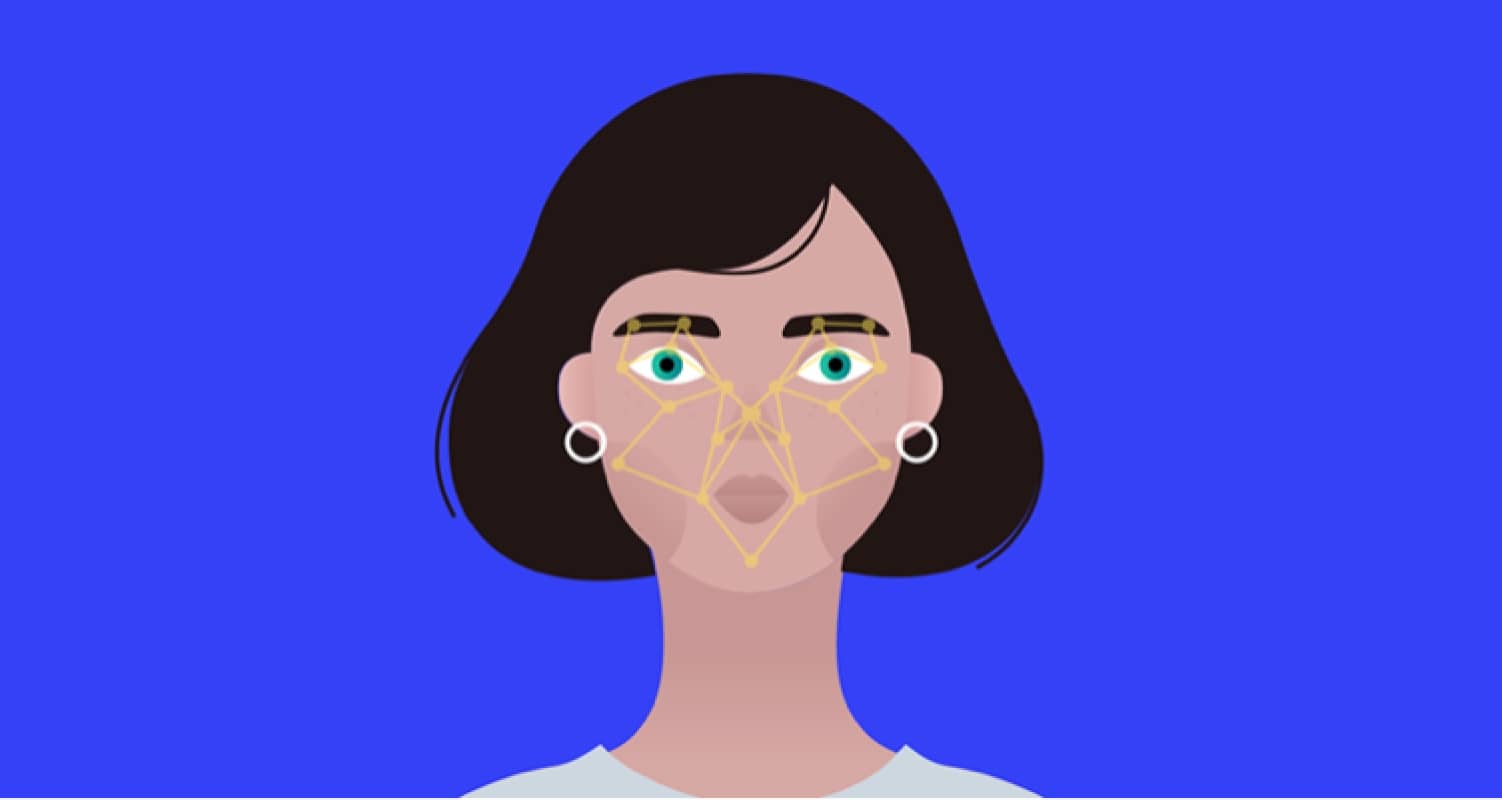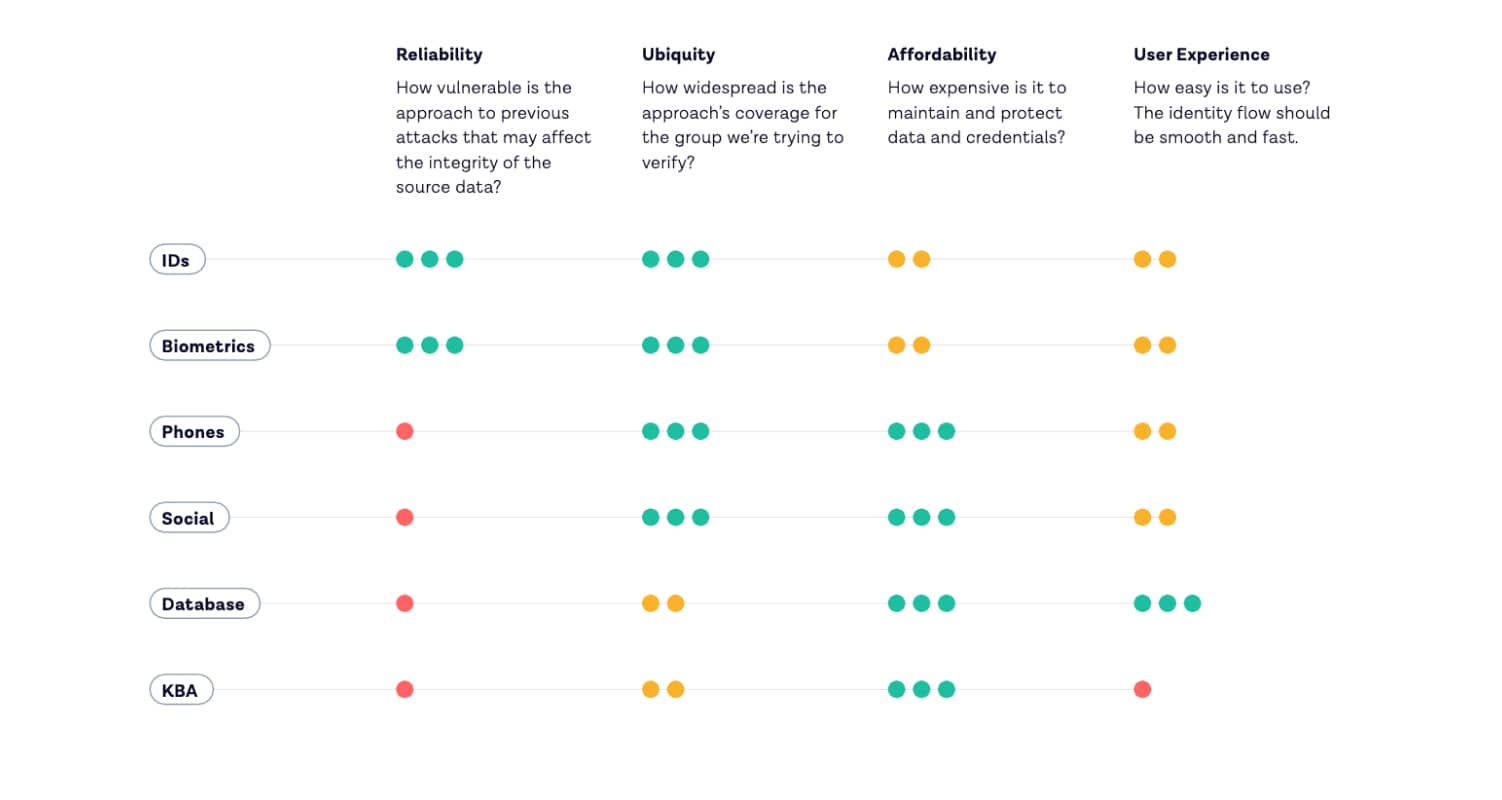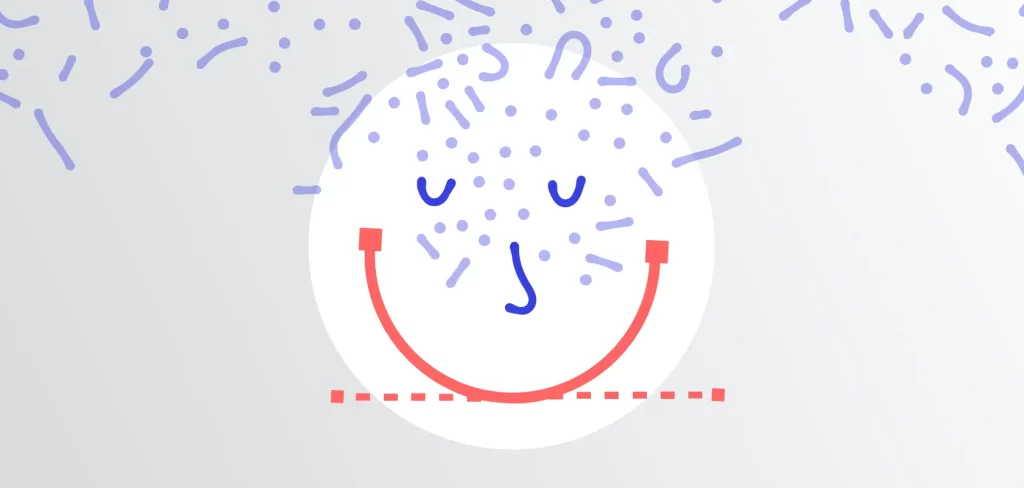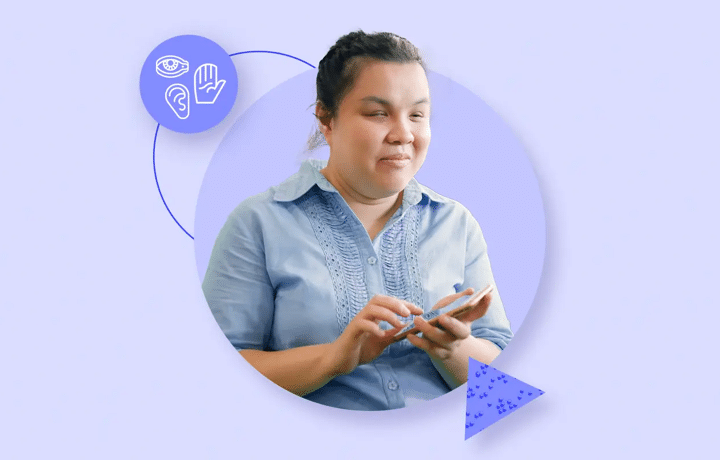
Everyone has distinguishable physical characteristics that are unique to them, and only them. These are our biometrics. They include things like fingerprints, facial patterns, and our voice.
Biometric verification is the process of identifying a person via these unique characteristics. It helps answer the question ‘who are you?’ in a digital environment. That person can then gain access to the services, devices or systems that they want.
What are the different types of biometrics?
Most people are probably more familiar than they think with some of the different types of biometrics. Some forms of biometric authentication are now built into many consumer devices, such as computers and smartphones.
Fingerprint recognition is probably one of the most common forms of biometrics used in our everyday lives, due to their mass deployment in smartphones. Many devices such as screens or touchpads can be fairly easily turned into fingerprint scanners.
Secondly, some digital assistants and telephone-based services make use of voice recognition to identify and authenticate customers. Voice recognition has grown in use with the rise of AI and intelligent assistants, such as Amazon's Alexa and Apple's Siri.
And finally, another common form of biometrics is facial recognition technology. Any device with a camera can leverage this type of technology. For example, many of us now own a smartphone that we can unlock using our face.
How does biometric verification work?
The use of biometric technology has rapidly increased in the past years to verify identities for online access and detect illicit activity. According to The Biometric Survey in 2021, over 60% of large companies in the US have adopted biometric authentication, and consumers are even more willing to adopt such technologies. More than 80% of individuals are open to using biometrics for authentication during secure transactions.
Three examples of biometrics that are readily available and in use today include fingerprint recognition, facial verification, and voice recognition.
Fingerprint scanning
We’re all familiar with unlocking our phones or logging into a bank account using our fingerprints. India’s biometrically-verifiable identification number system, known as Aadhaar, is an example of the power biometrics can have beyond just logins. The system — which ties a person’s biometrics to their Aadhaar number — was introduced in 2009. The ability to identify oneself with fingerprints now powers payment solutions such as Micro ATMs.
Facial verification
Face scans are an even newer technology to unlock phones and gain access to digital services. Beyond unlocking devices, many businesses have adopted facial recognition technology to onboard new users or re-verify them when they return in high-risk moments. Facial recognition uses AI to scan features and determine if a real user is present (versus a mask or a digital attack by a fraudster), and can match a user’s biometrics to an identity document.
Voice recognition
Voice recognition technology uses unique markers in a person’s voice sample to check against a stored voice print and determine a match for verification.
Common uses of biometric verification today
The three most common uses of biometrics include mobile access and authentication, airport security, and online banking.
Mobile access and authentication
Until recently, a user would unlock their personal mobile device with a passcode. As technology evolved, devices started to store and recognize their owner’s fingerprint, and now, they can be unlocked with facial biometrics. The device initially takes and stores the user’s biometric sample, and the user is asked to present their fingerprint or face to authenticate or gain access each subsequent time.
Airport security
Biometrics are also used to check and clear travelers at airport security checkpoints. This contactless method can automate identity verification for everything from fast-track trusted-traveler lanes to using facial recognition as a boarding pass.
Online banking
Biometrics also offer a fast and secure way to gain access to online banking. A banking app on a mobile device might be locked behind the same biometric technology used to lock and unlock the device itself. A user may have to scan their fingerprint or face again on an unlocked device, to open the online banking app. Banks are increasingly using biometrics to allow new customers to open an account, which is where they are used as an identity verification method for onboarding.
Remote identity verification
For KYC compliance and fraud prevention, businesses often use a document and biometric based solution. A user provides the business with an image of a photo ID to be analyzed for authenticity. They also provide a selfie taken at the moment of onboarding.
AI is used to match the facial biometrics between the photo ID and selfie to provide the business with assurance that the identity document was submitted by its rightful owner, and not by a fraudster who may have illegally obtained the document.
What is a biometric identity verification system?
A biometric identity verification system refers to any process that uses biometric qualities to determine that a person is who they say they are. In other words, to verify their identity. Many businesses use a biometric identity verification system to build reasonable assurance in a customer’s identity to satisfy KYC regulations, and to prevent fraudulent users from onboarding to their services.
One example of a biometric identity verification system is an ePassport gate. These compare the photo on your passport to your facial biometrics to confirm your identity when traveling through border control at an airport.
Onfido’s technology works in a very similar way, only verification can take place anytime, anywhere. We use AI to compare a photo on an identity document to a photo or video of a person’s face (which they take via their smartphone) and confirm whether or not they match.
Why use biometrics?
Biometrics give a higher assurance that a person is who they say they are, in a digital environment, than other forms of verification such as username and passwords. Biometrics are a secure and convenient way to prove customer identities during onboarding, verification or authentication.
The process itself is similar to when someone compares your face in person to that on your ID, for example when you go through border control. However it’s done in a digital setting, and uses AI algorithms or in some cases highly trained human experts, to do the comparison. This makes it a much more accurate process than when an untrained human eye does the comparison manually.
Biometrics are also considered far more secure than other methods of identification. Traditional methods of verification often offer lower security and are more inconvenient. For example, social media logins are considered low security, and passwords also offer lower security and are easy for customers to forget, while knowledge-based questions offer slightly better security but can be cumbersome and hard to remember for customers.
In comparison, because biometrics are unique to the individual, it’s hard to replicate, forge or steal them. They are also easy for customers to use — it’s impossible to forget or lose them, because they are part of you.

Finally, biometrics offer a more convenient way for users to verify themselves. When opening a bank account for example, users traditionally would have to visit the bank branch in person to show their ID. But for most people, this is no longer convenient — it’s easier to sign up to services from the comfort of their own home. And for businesses, in-person verification isn’t scalable. Businesses can onboard more customers, more efficiently and securely, by incorporating biometrics into their process.
In fact, according to IBM research, 87% of businesses would consider using biometric identification in the future, while 92% of enterprises rank biometric authentication as ‘effective’ or ‘very effective’ to secure identity data. We spoke to National Technology News about the top technology trends to in expect in 2023: “Biometrics are not just an effective deterrent against fraudsters which add a layer of sophistication to online registrations, but they also enable reusable identity forms — giving consumers a transportable method of proving their identity."
Are biometrics safer than passwords?
Biometrics offer a number of intrinsic benefits over passwords as a method of authentication. They’re unique to individuals, and unlike passwords, cannot be easily replicated, lost, or stolen. For this same reason they’re also very convenient. A user doesn’t need to remember many complex passwords, manage a password manager, or type anything. They just need to glance at a camera, speak a phrase, or place their finger on a scanner.
How do we use biometric verification at Onfido?
Onfido’s solution means that a user can anchor their physical identity to a digital account at sign-up using a photo ID, and a selfie or video. First, a user takes a picture of their identity document, which is checked for fraud by our market-leading Atlas™ AI. Then a user will submit either a selfie or a video, which is compared with the photo on the identity document.
Selfie check
Users are guided to take a selfie picture. Then our AI, Atlas, compares the face in the identity document with the selfie and then returns a similarity score. This checks that the person submitting the ID is the same person who owns that ID, protecting against stolen or fake IDs.
The selfie is also analyzed for abnormal texture which protects from fraud. It detects photos of photos, or photos of screens, which a fraudster may have tried to pass off as a selfie.
Motion check (video)
A video check requires the user to take a short video on their phone to prove liveness. They record a movement — with Onfido Motion, we guide them to do a simple head turn to the left and right. With this liveness check, we can determine that the person is actually present and not using a mask or prerecorded video, and that they are the same person as the one submitting the ID.
Video adds an extra layer of protection from additional and more sophisticated fraud attacks, such as spoof selfies, deep fake videos, and 2D and 3D masks.
Explore our award-winning biometric verification solutions, and how we help 900+ businesses see real identity.






